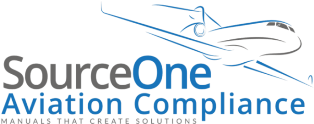See the Regulatory Equipage Compliance Mandates here: Regulatory Mandate Time Lines FANS 1A, Data Link, ADS-B, & TCAS II 7.1
Options: NAT Data Link Requirement Update 2015 Options
Mandates requiring business jet operators that fly to Europe to equip their aircraft for datalink communications with ATC are now in effect as of February 5, 2015. The price of non-compliance will be higher costs and longer trips as operators are forced to fly at sub-optimal altitudes and on less direct oceanic routes.
Flying the best altitudes and routes will require a datalink capability known as the Future Air Navigation System (FANS)–the somewhat ironic name for a system that airliners have used since the 1990s as an alternative to HF radio communications. Fans has two components: automatic dependent surveillance-contract (ADS-C) and controller pilot datalink communications (CPDLC). ADS-C is the automatic downlink of position reports on a contractual basis from an aircraft to a ground station; CPDLC provides for direct text messaging between pilots and controllers for flight reroutes, altitude changes or other instructions. In the oceanic environment, data is conveyed by the Iridium or Inmarsat satellite constellations.
Of the estimated 1,400 North Atlantic Track System (NATS) crossings daily, 6 percent, or about 84 crossings, are conducted by business aircraft, and only half of those are Fans-equipped. This number is increasing with OpSpec and LOA approvals.
This February, the two center tracks of the NATS between FL360 and FL390 will be closed to non-Fans traffic. As of last year in January of 2014, aircraft crossing the Atlantic must be Fans-equipped with operational approval to be exempted from Europe’s Link 2000+ mandate, which requires aircraft operating in European airspace to be equipped for CPDLC using VHF Digital Link (VDL) Mode 2. Portions of North Atlantic minimum navigation performance specification airspace will close to non-Fans traffic in February 2015.
“A lot of operations, their optimum altitude is between 37 and 39–Challenger 601, Falcon 50, Falcon 900, GII, GIII. A lot of times FL400 is not achievable because it’s too hot or they’re at gross weight,”. “If they get shoved down below, at FL340 or FL350, a lot of these aircraft are going to be burning at least 10 percent more fuel. … Eventually in 2015 and after that, if you’re not Fans-equipped (Data Link), you’re going to be burning a lot more fuel than you are today.”
The cost of non-compliance with Fans mandates will be that aircraft are prohibited from flying in core North Atlantic tracks initially, and eventually will be consigned to northerly “Blue Spruce” routes within range of VHF ground stations. He estimated that non-complying operators flying four North Atlantic trips a year could pay some $64,000 because of the longer distances, additional tech stops and unfavorable winds.
The two-step process of gaining approval to use Fans datalink communications for ATC, also known as air traffic services (ATS), beginning with design approval of the Fans 1/A equipment suite through an STC or manufacturer’s service bulletin. Unfortunately, there is no simple “Fans-in-a-box” solution. The needed equipment includes a flight management system software update; a communications management unit, an annunciator “cube” integrated into displays; an aural alert capability; a data-capable cockpit voice recorder (per FAA Advisory Circular 20-160); and a level-D satcom system. Advisory Circular 20-140 “provides one acceptable means of compliance” for type certificates and STCs involving datalink systems used for ATS.
The second step is to obtain operational approval ensuring that flight crews are trained and operations manuals, minimum equipment lists and procedures updated. “Approval to install a TC’d [type certified] or STC’d datalink communications system does not constitute authorization to use the system,” the FAA states in AC 120-70B. The operator must either request a revision to its operations specifications or a letter of authorization (LOA) from theFAA. Obtaining the LOA may take anywhere from several weeks to several months. The authorization may also involve a route demonstration, “To get your ops approval, you do have to demonstrate that the system works in the operational airspace.”
